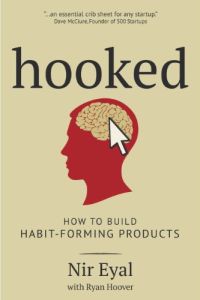Join getAbstract to access the summary!

Join getAbstract to access the summary!
Nir Eyal
Hooked
How to Build Habit-Forming Products
Portfolio, 2014
What's inside?
Your habits, good and bad, are money in the bank to the people who make the products you use every day.
Recommendation
Your alarm wakes you and you stagger to the kitchen to brew a cup of coffee. You reach for your smartphone to map the traffic to work, check the weather and get an update on your friends. You perform these activities automatically, with little thought. Yet, if you find Keurig, Weather.com or Facebook habit-forming, that’s not an accident. Getting you to incorporate its products and services into your habitual routine is the ultimate goal of every business. Consumer psychology expert Nir Eyal developed the “Hook Model” to put this brass ring closer to product developers’ grasp. He created his four-step model by researching the traits that successful products have in common, drawing insights from behavioral psychology and neuroscience, and extrapolating from his personal experience in gaming and advertising. While his model seems particularly apt for digital products, getAbstract recommends this user-friendly text to marketers, designers and entrepreneurs across product categories.
Summary
About the Author
Nir Eyal is a video-gaming industry and advertising veteran. He writes, speaks and teaches about applied consumer psychology.


















Comment on this summary